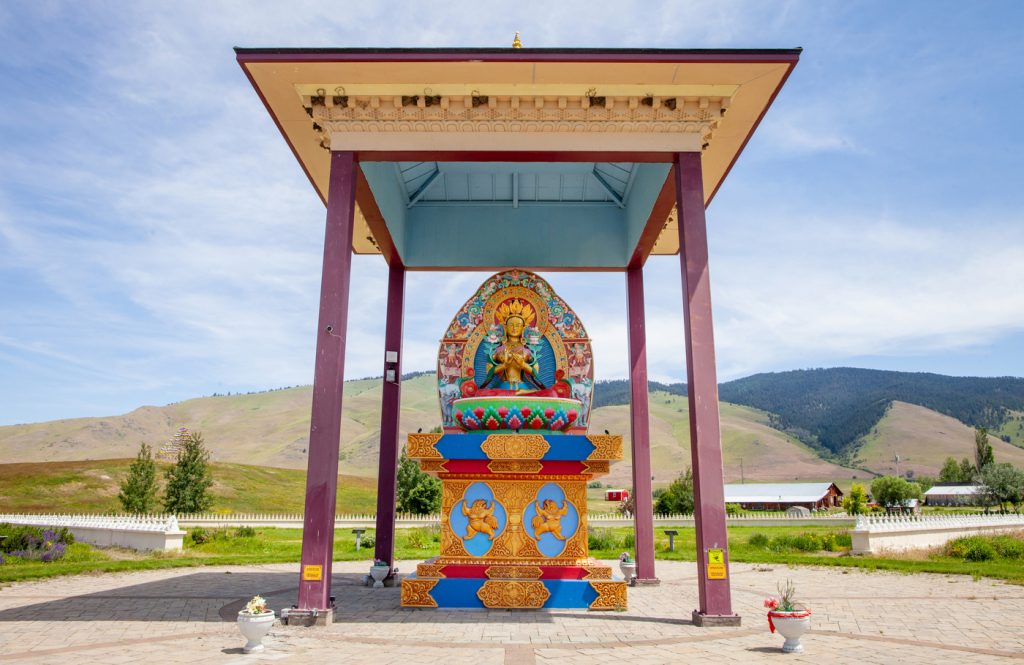On a trip to Montana to teach the dharma, Tibetan Buddhist leader Gochen Tulku Sangngag Tenzin Rinpoche recognized a tranquil spot south of Glacier National Park. He had never been there before, but he recalled it from a vision he had a childhood vision—a peace garden nestled in a mountainous valley—and knew that this is where it belonged.
The Garden of One Thousand Buddhas rests in the Jocko Valley, surrounded by Rocky Mountains reminiscent of the snowcapped Himalayas of Rinpoche’s homeland. Seeded two decades ago, it continues to flourish under the care of a Tibetan diaspora within the domain of the Confederated Salish and Kootenai Tribes on the Flathead Reservation in Arlee, Montana.
Inspired by the Heart Sutra, the garden takes the form of an eight-spoked dharma wheel (representing the eightfold path) and features teachings from the Heart Sutra in eight languages.
Atop the spokes sit 1,000 buddha statues (referencing the 1,000 buddhas prophesied in the Fortunate Eon Sutra); around the rim there are 1,000 stupas, each housing a small image of diety Tara. At the center lies a twenty-five-foot statue of the deity Yum Chenmo (“Great Mother”), who embodies the perfection of wisdom. Destroyed weapons and symbols of war are buried beneath some of the statues, signifying a triumph of compassion over negativity.
A shared vision for a world that respects all life helps the garden continue to grow. “There are a lot of similarities between the respect for the land and balance and the spirit,” says Tom McDonald, chairman of the Salish and Kootenai, about his Tibetan neighbors.
Thank you for subscribing to Tricycle! As a nonprofit, we depend on readers like you to keep Buddhist teachings and practices widely available.
